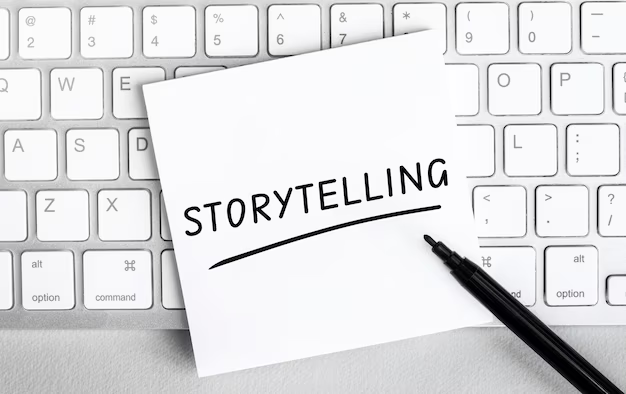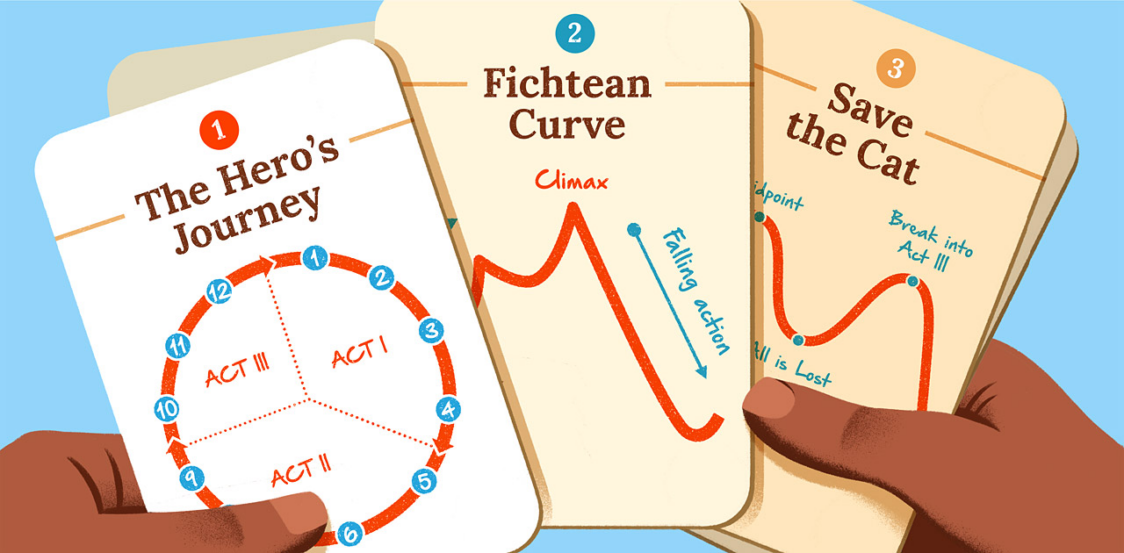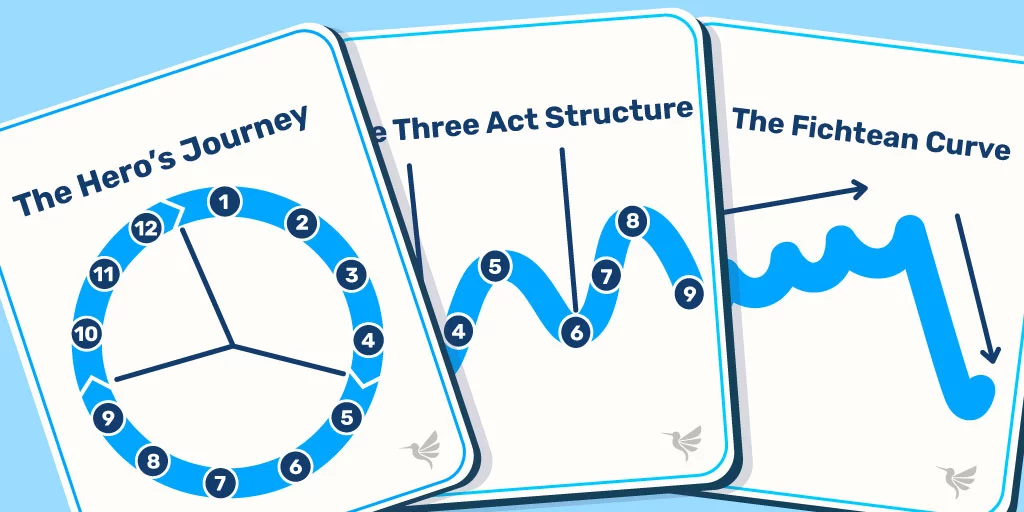
Storytelling has been an essential part of human communication since the beginning of time. It captivates and engages us, leaving a lasting impact on our minds and hearts. The art of storytelling goes beyond mere entertainment; it can be a powerful tool for communication, persuasion, and creating meaningful connections. One crucial element that makes a story truly impactful is its structure.
The Essence of Storytelling
The Power of Stories
Stories have an incredible ability to connect people on a deep emotional level. They allow us to make sense of the world, share experiences, and inspire action. Stories have been a vital part of human culture, passed down through generations, preserving knowledge, traditions, and values. Whether in books, movies, or personal anecdotes, stories create an immersive experience that engages our senses and captures our imagination.
The Role of Structure in Storytelling
The structure of a story serves as its backbone, providing a framework that organizes and guides the narrative. It shapes the flow of events, builds suspense, and evokes emotions. Just like a well-constructed building, a story needs a solid foundation and a well-thought-out structure to captivate the audience. By understanding and implementing effective storytelling structures, you can create narratives that resonate deeply with your readers or listeners.
Key Components of Storytelling Structure
Introduction (Setting the Stage)
The introduction sets the tone for your story and introduces the main characters, time, and place. It establishes the context and hooks the audience’s attention, making them curious about what will unfold next. A compelling introduction creates anticipation and draws the audience into the narrative.
Exposition (Providing Background)
In the exposition phase, you provide essential background information about the characters, their motivations, and the world they inhabit. This component helps the audience understand the context of the story, establishing the groundwork for the events that will follow.
Rising Action (Building Tension)
The rising action is where the story begins to gain momentum. It introduces conflicts, challenges, and obstacles that the protagonist must overcome. This section builds tension and keeps the audience engaged, eagerly anticipating the climax.
Climax (Turning Point)
The climax is the pivotal moment in the story where the tension reaches its peak. It is the turning point that propels the narrative forward, bringing resolution to the conflicts established in the rising action. The climax often reveals a significant revelation or a critical decision made by the protagonist.
Falling Action (Resolving Conflicts)
Following the climax, the falling action allows the story to wind down gradually. It provides closure to the conflicts and ties up loose ends. This component is crucial for giving the audience a sense of resolution and satisfaction.
Resolution (Wrapping Up)
The resolution is the final phase of the story. It brings the narrative to a close, providing a sense of completion and leaving the audience with a lasting impression. This is an opportunity to reflect on the lessons learned or the impact of the story.
Enhancing Your Storytelling Skills
Crafting Engaging Characters
Compelling characters are the heart and soul of a story. Develop well-rounded characters with relatable motivations, strengths, and flaws. Your audience should root for them, invest emotionally in their journey, and experience their growth throughout the narrative.
Creating Dynamic Settings
Settings play a crucial role in storytelling, as they provide the backdrop for the events to unfold. Engage the audience’s senses by vividly describing the surroundings, incorporating sensory details, and creating a rich atmosphere that enhances the overall experience.
Embracing Conflict and Tension
Conflict is the driving force behind any captivating story. Introduce conflicts that resonate with your audience, whether they are internal struggles or external challenges. Weave tension into your narrative to keep the readers or listeners on the edge of their seats, eagerly awaiting the resolution.
Employing Foreshadowing and Plot Twists
Foreshadowing adds depth and anticipation to your story. Hints and clues sprinkled throughout the narrative create a sense of intrigue, allowing the audience to anticipate upcoming events. Well-executed plot twists can surprise and engage the audience, leaving a lasting impact.
Storytelling Structure Techniques
The Hero’s Journey
The Hero’s Journey is a widely recognized storytelling structure that follows a hero as they embark on a transformative journey. It typically includes stages such as the call to adventure, meeting mentors, facing trials, and ultimately returning home as a changed individual. This structure provides a powerful framework for creating narratives that resonate with the audience’s own personal journeys.
Three-Act Structure
The three-act structure is a popular narrative framework used in many forms of storytelling. It divides the story into three main sections: setup, confrontation, and resolution. This structure allows for a clear progression of events, building tension and providing a satisfying resolution.

Different Storytelling Techniques
Flashbacks and Flashforwards
Flashbacks and flashforwards are narrative techniques that disrupt the linear progression of a story. Flashbacks take the audience back in time to reveal important past events, while flashforwards provide glimpses of future events. These techniques add depth, intrigue, and a sense of anticipation to the narrative, allowing for a more nuanced exploration of characters and plot development.
Multiple Points of View
Telling a story from multiple points of view can offer a broader perspective and create a more complex narrative. Each character’s viewpoint contributes unique insights and emotions, allowing the audience to understand different motivations and experiences. This technique adds richness to the storytelling and invites readers or viewers to engage with diverse perspectives.
Nonlinear Narrative
A nonlinear narrative structure presents events out of chronological order. It challenges the audience’s expectations and requires them to piece together the story’s fragments. This technique can heighten suspense, create surprises, and encourage active engagement. However, it requires careful execution to ensure clarity and coherence.
Framing Device
A framing device involves placing a story within another story. It often begins with a prologue or an introduction that sets the stage for the main narrative. The framing device can be a powerful tool to provide context, introduce themes, or create a sense of mystery. It adds an additional layer of storytelling that enhances the overall impact of the narrative.
The Impact of Storytelling Structure in Marketing
Storytelling structure plays a significant role in marketing, enabling brands to connect with their target audience on an emotional level. Here are some ways storytelling structure can enhance marketing efforts:
Brand Storytelling
Crafting a compelling brand story helps establish an emotional connection with customers. By incorporating storytelling structure, brands can effectively communicate their values, mission, and unique selling propositions. A well-structured brand story can differentiate a company from its competitors and leave a lasting impression on consumers.
Customer Testimonials
Customer testimonials are powerful storytelling tools that showcase the positive experiences and outcomes associated with a product or service. By structuring testimonials using storytelling techniques, such as introducing the customer’s challenge, the journey, and the ultimate success, brands can create authentic and relatable narratives that resonate with potential customers.
Narrative-driven Advertising Campaigns
Incorporating storytelling structure in advertising campaigns can make them more memorable and impactful. By weaving narratives into commercials or online videos, brands can capture the attention of their target audience and evoke emotional responses. A well-crafted narrative can leave a lasting impression and drive brand awareness and customer engagement.
Content Marketing Strategies
Effective content marketing relies on engaging storytelling. By structuring blog posts, articles, or social media content using storytelling techniques, brands can capture the interest of their audience and provide valuable information in an entertaining and compelling way. Structured narratives can make the content more shareable, leading to increased visibility and brand exposure.

The Evolution of Storytelling in the Digital Age
The digital age has revolutionized the way stories are told and consumed. Here are some ways in which storytelling has evolved in the digital landscape:
Interactive Storytelling
Digital platforms have enabled interactive storytelling experiences, where the audience actively participates in shaping the narrative. From choose-your-own-adventure stories to immersive video games, interactive storytelling creates a sense of agency and engagement, allowing users to have a personalized experience.
Transmedia Storytelling
Transmedia storytelling involves expanding a story across multiple platforms and mediums, such as books, movies, video games, and social media. Each platform contributes to a larger narrative universe, providing additional layers of storytelling and enhancing audience engagement. Transmedia storytelling allows for a more immersive and interconnected storytelling experience.
User-Generated Content
The rise of social media has empowered individuals to become storytellers themselves. User-generated content, such as blogs, vlogs, and social media posts, allows people to share their stories and experiences with a global audience. This democratization of storytelling has diversified narratives and created a more inclusive and participatory storytelling landscape.
Data-Driven Personalization
In the digital age, storytelling can be tailored to individual preferences and interests through data-driven personalization. By leveraging user data and analytics, brands and content creators can deliver personalized narratives, recommendations, and experiences. This level of personalization enhances audience engagement and creates a more relevant and immersive storytelling experience.
The Ethical Dimensions of Storytelling
Storytelling holds immense power and influence, and with that power comes ethical responsibilities. Here are some ethical considerations to keep in mind when crafting narratives:
Authenticity and Truthfulness
Maintaining authenticity and truthfulness is paramount in storytelling. Misrepresentation or distortion of facts can erode trust and have detrimental effects on the audience’s perception. It is essential to ensure that the story being told is grounded in truth and accurately represents the experiences and perspectives being shared.
Cultural Sensitivity and Inclusivity
Respecting diverse cultures and perspectives is crucial in storytelling. It is important to approach stories with cultural sensitivity, avoiding stereotypes or cultural appropriation. Inclusivity ensures that stories represent a range of voices and experiences, promoting a more equitable and representative narrative landscape.
Consent and Privacy
Respecting the privacy and consent of individuals involved in a story is essential. Before sharing personal stories, it is important to obtain consent and consider the potential impact on individuals’ lives. Respecting privacy safeguards the well-being and autonomy of those involved, ensuring ethical storytelling practices.
Social Responsibility
Storytellers have the power to shape perceptions and influence social change. Embracing social responsibility entails using storytelling to promote positive values, challenge biases, and address social issues. Storytellers can contribute to a more inclusive and empathetic society by fostering understanding and empathy through their narratives.
The Science Behind Storytelling Structure
Storytelling structure is not just an art form; it also has scientific foundations that explain its impact on our brains and emotions. Here are some scientific insights into the power of storytelling structure:
- Neurological Engagement: Storytelling activates various regions in the brain, including those associated with language processing, sensory experiences, and emotions. This multisensory engagement strengthens memory retention and emotional connections to the narrative;
- Mirror Neurons and Empathy: Mirror neurons in our brains enable us to empathize with characters in a story. When we hear or read about someone’s experiences, our mirror neurons fire, allowing us to mentally simulate their emotions and experiences. This empathetic response enhances our engagement with the narrative;
- Dopamine Release and Attention: Engaging narratives trigger the release of dopamine in our brains. Dopamine is associated with pleasure and reward, making us more attentive and focused on the story. This chemical response encourages continued engagement and reinforces learning;
- Cognitive Coherence: Storytelling structure provides a cognitive framework that our brains naturally seek. Our minds are wired to process information in narrative form, seeking patterns, causal relationships, and resolutions. Storytelling structure aligns with our cognitive processes, making information more digestible and memorable.

The Future of Storytelling Structure
As technology advances and storytelling continues to evolve, the future holds exciting possibilities for storytelling structure. Here are some potential trends and innovations on the horizon:
- Virtual Reality Storytelling: Virtual reality (VR) presents opportunities for immersive storytelling experiences. By integrating storytelling structure with VR technology, audiences can become active participants in the narrative, exploring worlds and engaging with characters in entirely new ways;
- Interactive AI Storytelling: Artificial intelligence (AI) has the potential to generate dynamic and personalized narratives. AI algorithms can adapt stories in real-time based on individual preferences, creating unique and tailored storytelling experiences for each user;
- Cross-media Storytelling: Cross-media storytelling blurs the boundaries between different forms of media, seamlessly integrating narratives across platforms such as books, movies, video games, and social media. This approach provides a cohesive and immersive storytelling experience that transcends traditional media limitations;
- Storytelling for Social Impact: Increasingly, storytelling is being used as a tool for social change. The future of storytelling structure will likely see a rise in narratives that address pressing societal issues, foster empathy, and promote positive action, aiming to create a more equitable and compassionate world.
Conclusion
Crafting compelling narratives requires a deep understanding of storytelling structure. By implementing effective structures, you can engage your audience, create emotional connections, and leave a lasting impact. Storytelling is a powerful tool that can be utilized in various fields, from marketing to public speaking. So, embrace the art of storytelling, experiment with different structures, and unleash the full potential of your narratives.